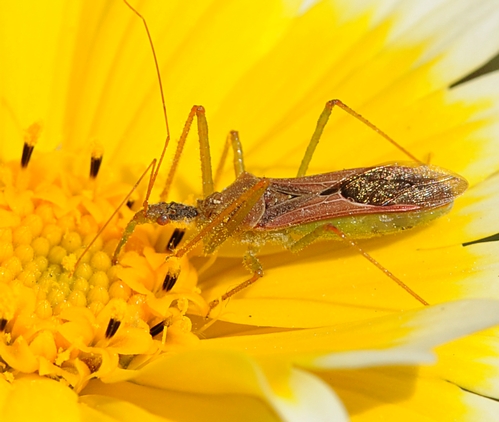If you see a patch of California native wildflowers known as "Tidy Tips," look closely.
The yellow daisylike flower with white petals (Layia platyglossa) may yield a surprise visitor.
You may see an assassin.
An assassin bug.
A member of the family Reduviidae, this is a long-legged, beady-eyed beneficial insect that stalks its prey and snatches it with its forelegs, somewhat like a praying mantis. It conquers its victim with a squirt of deadly venom from its beak (the collective term for its piercing, sucking mouthparts).
Once it has immobilized its prey, the assassin sucks the bodily contents, like a milkshake slurped through a straw.
The critter below is a assassin bug from the genus, Zelus, according to Lynn Kimsey, director of the Bohart Museum of Entomology and professor and vice chair of the UC Davis Department of Entomology.
The name, Zelus, originates from Greco-Roman mythology. Zelus, a winged enforcer, guarded the throne of Zeus.The assassin bug, true to its name, ambushes, attacks and captures other insects, such as aphids, flies, crickets, mosquitoes, beetles, caterpillars and "sometimes a hapless bee," said Bohart senior museum scientist Steve Heydon.
One thing about the Zelus assassin bug--it does not fly very fast. In fact, it totally ignored the camera poked close to its protruding eyes.The camera neither looked like or acted like a predator or prey.
No worries.
Attached Images:

Patch of Tidy Tips

Assassin Bug

Sip of Nectar